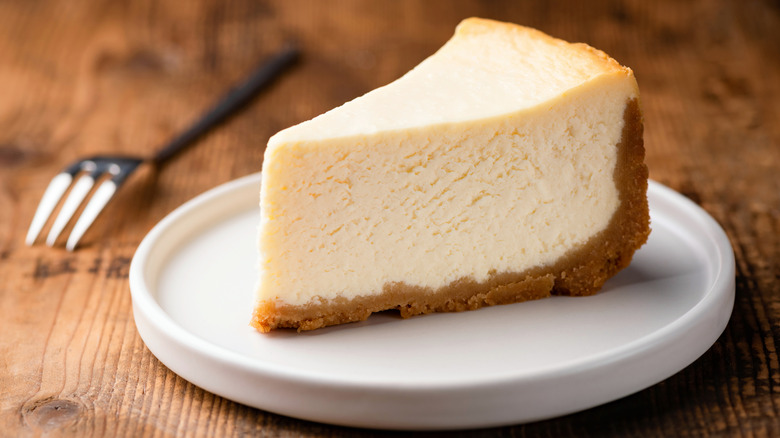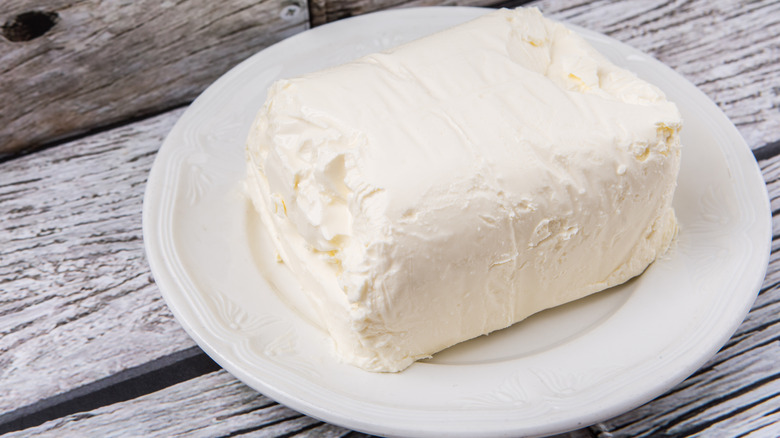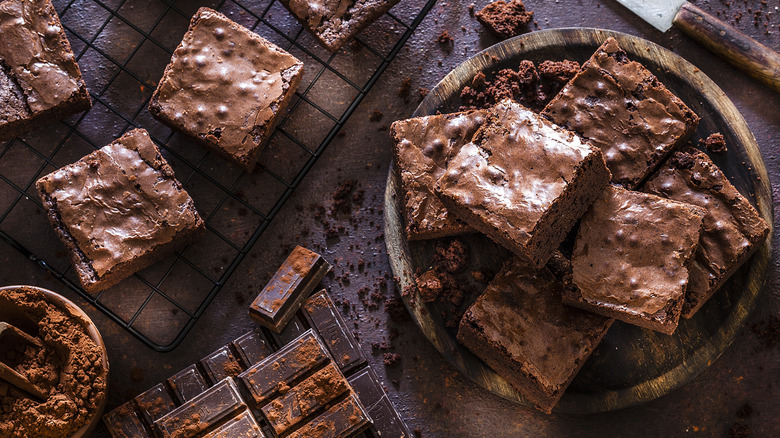Why Cream Cheese Blocks Are Superior To Tubs For Baking
Whether you're making cheesecake or carrot cake, cream cheese is an essential baking ingredient. But when there are so many options available at the store — from flavored to fat-free — it can be difficult to know what to grab for your next baking project. Don't choose blindly: The type you pick does make a difference in the outcome of your recipe.
Plain cream cheese blocks (the kind that comes in rectangular packages) are your best bet when it comes to baking. Some cream cheese is sold in tubs and is better for spreadability. But this style is more difficult to bake with — though it's great for lathering onto bagels. Block-style cream cheese can be measured easily and softens quickly and evenly; tubbed cream cheese is a hassle to measure and takes longer to reach that proper, room-temp consistency.
As for flavor and fat content, check your recipe — plain, full-fat cream cheese is usually ideal, but recommendations may vary.
Are block and tub cream cheese the same?
Besides their packaging, you may be wondering if there are any major differences between block cream cheese and tubbed cream cheese. The answer: It depends on the brand. Some tubbed cream cheeses have very similar ingredients to block cream cheese — the only big difference is in preparation. In order to increase spreadability, tubbed cream cheese gets whipped with lactic acid before packaging. Whipping air into the cheese helps keep the texture light and smooth, allowing you to smear it on bagels and toast without the sticky resistance that comes with blocks of cream cheese. Also, the manufacturing process for whipped cream cheese produces a grainier texture than cream cheese blocks; an important detail when it comes to baking.
Some companies also mix additional ingredients into the tub to preserve that spreadability. Additives like whey protein and guar gum appear on some ingredient lists, serving to keep the cream cheese moist and silky even after opening the container. While this doesn't affect the flavor of the cream cheese, it can affect the texture.
Better baking with block cream cheese
What to do with those blocks of cream cheese, now that you've softened them up for baking? You could go with a classic baked cheesecake, swirl your cream cheese in brownies, or whip up a beautiful and delicious red velvet cake. But there are a plethora of unique applications for this ingredient, from piping it into pastries as a filling to using it to take pie crust to the next level.
Only have a tub of cream cheese in your fridge? Don't fret! You can still use it for sweets: Just be careful about using it in cream cheese-heavy recipes like cheesecake, or your final product may be grainy. Alternatively, turn that tubbed cream cheese into a delicious, desserty topping by mixing in sugar and fruit, jam, chocolate chips, or other similarly sweet ingredients. Spread that over a chocolate chip bagel, cinnamon swirl bread, or other delicious baked goods for an extra decadent treat.


